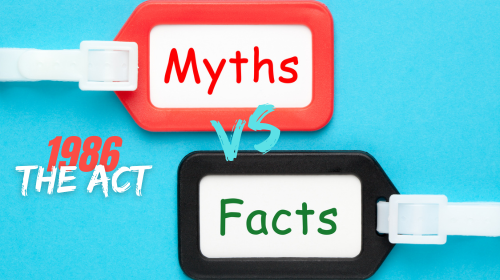MedAlerts is the unique database search engine created and launched online in 2003 by computer science expert
to allow people to search and review reports of vaccine-related complications made to the federal Vaccine Adverse Events Reporting System (VAERS). Dr. Rubin developed MedAlerts to provide people with a user-friendly way to search vaccine reactions reported to the U.S. government by doctors, nurses and other vaccine providers, as well as the public.
VAERS was included as part of the vaccine safety informing, recording and reporting provisions that NVIC co-founders secured in the 1986 National Childhood Vaccine Injury Act as an integrated post-marketing surveillance system to monitor potential safety problems with vaccines.
2 VAERS is jointly operated by the Food and Drug Administration (FDA) and Centers for Disease Control (CDC).
3
With 60,000 hits daily, Dr. Rubin estimates MedAlerts attracts some 3,000 unique visitors to the website per day. Following is an historical look-back at why and how Dr. Rubin created the invaluable online VAERS database search engine,
MedAlerts, that can be accessed through
NVIC.org.

Parents’ Experiences with Vaccine Reactions Leads to Computer Program
Steven Rubin never planned to create MedAlerts or get involved with vaccine reaction reporting. The VAERS data wasn’t even on his radar. In the 1990’s, he was simply working as a computer scientist writing open-source software. In 1996, his wife, Amy Lansky, PhD, left her job as a computer scientist to study homeopathy and later wrote the book, “Impossible Cure,” about their son’s autism and the important role homeopathic remedies played in their son’s recovery from autism.4
In the late 1990’s, Dr. Rubin became aware that babies were dying and suffering brain injury after routine vaccinations and he began investigating the federal VAERS data. At that time, he observed “VAERS was available to the public only as a collection of terse and unusable data files.” After spending a few days analyzing the VAERS data files, he developed a new computer software program to analyze and make sense of the VAERS data files.
Before MedAlerts: NVIC Monitors VAERS DPT “Hot Lots”
Before Dr. Rubin created MedAlerts, for more than a decade after Congress passed the 1986 National Childhood Vaccine Injury Act, NVIC co-founders had routinely submitted Freedom of Information Act (FOIA) requests to the CDC to obtain computer discs with raw data from VAERS. The process often took three to four months to complete from time of NVIC’s FOIA submission to receipt of the discs.
With the help of a computer programmer, who developed special software to de-code the raw data, between 1990 and 2000 NVIC co-founder and vice president Kathi Williams monitored reports of infant deaths and symptoms of brain inflammation/encephalopathy that were associated with different lots of DPT vaccine and NVIC published lists of “hot lots” of DPT vaccine.
In 1994, NBC broadcast a special investigative report on the “NBC Now Show Tom Brokaw and Katie Couric” that featured a family, whose son was severely brain injured by DPT vaccine that came from a DPT “Hot Lot.”
5
Making the VAERS Data Easy to Search
Once Dr. Rubin developed easy-to-use software to search the VAERS database, he was astonished by all of the information contained in VAERS. He decided that the public should have access to a website that features government vaccine reaction report data and converts it into a format so anyone can search it.
After the launch of the website in 2003, more and more people discovered MedAlerts. As its popularity grew, Dr. Rubin looked for an established vaccine education group to partner with and his wife suggested the National Vaccine Information Center.
MedAlerts & NVIC.org: A Match
When Dr. Rubin approached NVIC in 2005, the reputation of the MedAlerts database was already known to NVIC’s co-founders.
“We were very excited to partner with Dr. Rubin and connect MedAlerts with NVIC.org,” said Kathi Williams. “We knew the public would like being able to easily search the VAERS database online through NVIC’s website, which is the oldest consumer-operated vaccine information website on the Internet.”
The MedAlerts website was visually rebranded to align with NVIC.org and, in 2009, Dr. Rubin became NVIC’s volunteer Director of Vaccine Research Analytics.
Analyzing Emerging Trends in VAERS Reports
Dr. Rubin not only programs, continually updates and acts as the system administrator for MedAlerts, he takes the VAERS data one step further by analyzing emerging trends and posting
The MedAlerts Blogdescribing those trends.
6 For example, one trend he has reported this year is that for the past two years, there have been fewer VAERS reports filed.
The potential reasons for a decline in vaccine adverse event reports made to VAERS could be varied, from doctors preferring to make vaccine reaction reports to vaccine manufacturers instead of the federal government or to a growing lack of interest in completing the required paperwork (even though the requirement to report is part of federal law).
Dr. Rubin sometimes is asked to answer specific “cause and effect” questions about individual VAERS reports or trends he observes but urges people to remember that he is a computer scientist analyzing data and not a medical professional giving medical advice!
7
MedAlerts – Better than the CDC’s Wonder Database
MedAlerts was the first online search engine that gave the public an easy-to-use tool to review and analyze VAERS data. Shortly after MedAlerts was posted online, the federal government created the CDC-operated Wonder (Wide-ranging Online Data for Epidemiologic Research). Dr. Rubin maintains that MedAlerts has a better user interface with increased search capabilities and more powerful reporting capabilities than CDC Wonder.
“Over the years, I’ve seen things that I have in MedAlerts get adopted by CDC Wonder,” he said. “To me, this is great news … it show that my efforts are pushing the government to keep up.”
Further, MedAlerts seems to be the popular choice for families as well as health professionals examining the VAERS database. Dr. Rubin recalled that “Dr. Vicky Debold (NVIC’s volunteer Director of Research and Patient Safety) once went to a government briefing on vaccine safety. She noticed that the government scientist had slides that obviously came from MedAlerts (not CDC Wonder). When she asked the scientist why, he told her that organizations questioning vaccine safety have “the best VAERS search engine.’”
Building the Unique “Wayback Machine” To Double-Check VAERS
On MedAlerts, you can search adverse events by vaccine, symptoms of reactions, dates, state of residence, age and more. In August 2012, Dr. Rubin added a feature that allows people to analyze VAERS information dating back to 2003.
8
“As a ‘digital packrat,’ I never throw away a disk file. As a result, I realized that I had every government download since 2003, sitting on my computer,” he said. He was spurred to build the “Wayback Machine,” allowing MedAlerts users “to compare any two government data releases, look at the history of changes to any VAERS report, and do other high-level analysis.
NVIC uses the “Wayback” feature to check monthly releases of government data. “Suspicious changes to the VAERS data are easily spotted,” said Dr. Rubin.
MedAlerts: The “Go To” Vaccine Reaction Search Engine
Doctors, nurses and other vaccine providers are not the only ones who can report to VAERS. Anyone receiving a vaccine or who is the parent of a child, who has suffered serious health problems following vaccination, can make a vaccine reaction report to VAERS. If your doctor recommends that you or your child get one or more vaccines and you would like to check out publicly reported serious health problems associated with those vaccines, MedAlerts is a good place to start. Dr. Rubin has even created an online help for using it.
“MedAlerts is the go-to site for vaccine injury report information collected by the government,” Dr. Rubin said. “You can learn a lot by reading the signs and symptoms of vaccine reactions that are being reported and recorded in this important database.”






.png?width=991&height=280&ext=.png)



Leave a comment
Your email address will not be published. Required fields are marked with an *